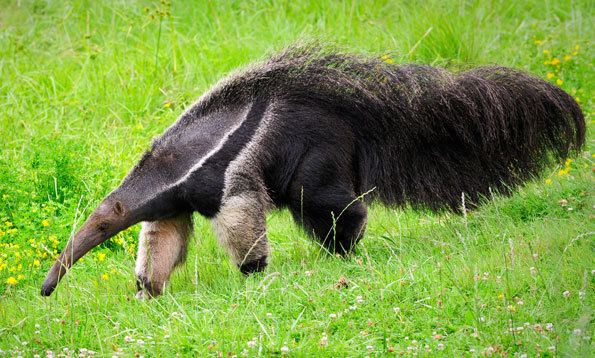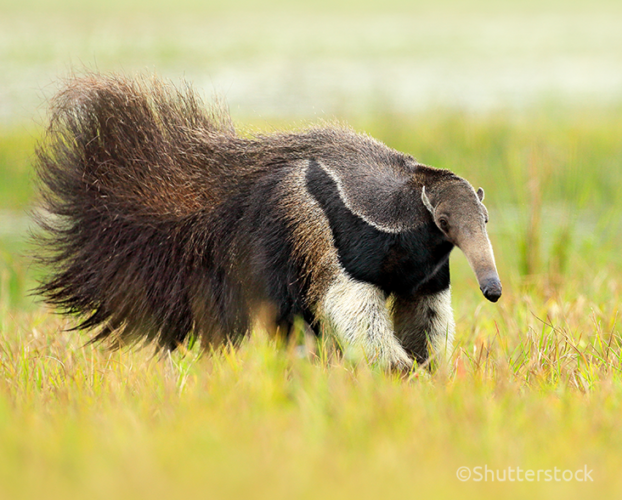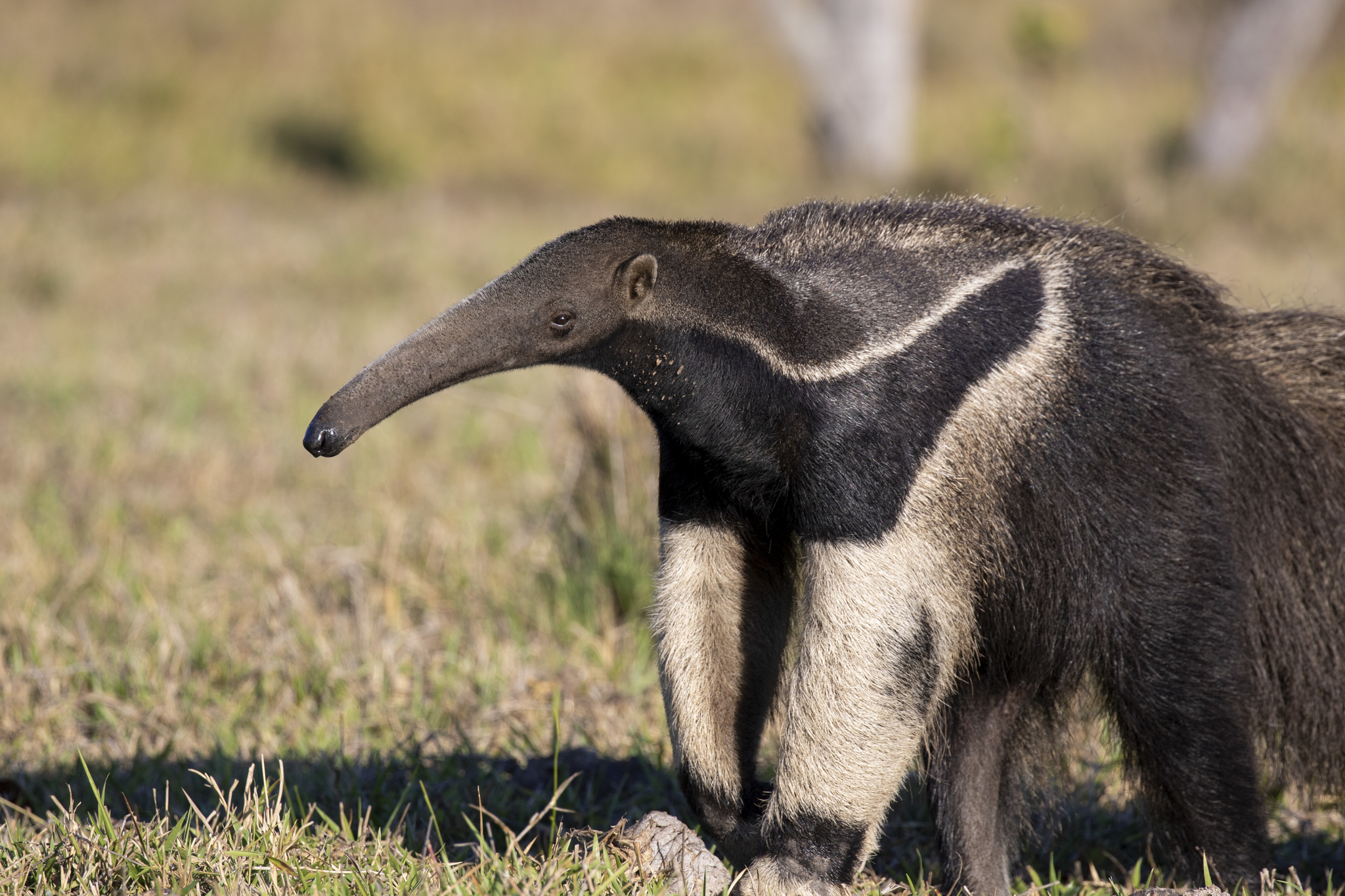Imagine a place where you could truly get to know some of the most unusual creatures on our planet, a spot where every visit brings new insights about the natural world. This is what we picture when we think about the Anteater Recreation Center, a conceptual space where the wonders of the anteater family are brought to light for everyone who wants to learn. It’s a chance, you know, to connect with animals that might seem a bit out of the ordinary, but are actually quite fascinating in their own way.
These animals, with their rather distinctive looks, truly hold a special spot in the animal kingdom, offering a glimpse into how nature creates such a wide range of living things. You might think you know them, but there’s so much more to these creatures than just what you see at first glance. We’re talking about a group of mammals that are, in some respects, truly unique in how they go about their day, finding their meals and living their lives.
So, if you have ever been curious about animals that have a tongue like a worm, or ones that can eat a huge number of insects in a single day, then the idea of an Anteater Recreation Center is probably for you. It’s all about uncovering the facts, the cool stuff, and the important roles these animals play, giving you a chance to appreciate them on a deeper level, which is that, pretty cool.
- Alicerosenblum Porn
- Who Is Clint Black
- Country Outfitters
- Db Woodside Movies And Tv Shows
- Luxury Romantic Getaways
Table of Contents
- What Makes Anteaters So Special?
- How Many Kinds of Anteaters Are There, Really?
- What Do Anteaters Actually Eat?
- Where Do Anteaters Typically Live?
- Beyond the Snout - Other Interesting Anteater Traits
- The Giant Anteater - A True Titan
- Why Are Anteaters Important in Nature?
- Unraveling the Anteater's Family Tree
What Makes Anteaters So Special?
When you first hear about anteaters, you might just picture an animal with a really long nose. But there is, actually, so much more to them than that simple idea. These creatures belong to a specific group of mammals, a suborder called vermilingua, which is a very descriptive name if you think about it for a moment. It tells you something quite important about them right away, something that sets them apart from nearly all other animals you might know.
The name "vermilingua" itself has a rather interesting meaning, you know, as it literally translates to "worm tongue." This particular phrase gives you a good hint about one of their most unique body parts and how they use it. Their tongues are, in a way, quite long and slender, almost like a flexible cord, perfectly suited for reaching into tight spots where their food might be hiding. It is that kind of specialized tool that truly helps them get by in their daily lives, finding every last morsel of their meals.
These animals are, more or less, commonly known for what they eat, which is a pretty big part of their identity. They are quite fond of munching on ants and termites, which makes sense given their special tongue. It’s not just a casual snack for them; it is their main source of food, and they have developed some really clever ways to get it. So, when you think about an anteater, you are really thinking about a creature built for a very specific kind of eating, which is, in fact, quite amazing.
- Harkins Az Mills
- Is Sean Hannity Having A Baby
- Muhammad Ali Center
- Mjr Sterling Heights
- Lexus Of Clearwater
The "Worm Tongue" Wonders at the Anteater Recreation Center
At the Anteater Recreation Center, we would definitely highlight this "worm tongue" feature, as it is a central part of what makes these animals so unique. You would get to learn about how this long, flexible tongue works, how it moves, and how it helps them gather their food so effectively. It’s a pretty neat piece of natural engineering, if you ask me, a true marvel of how animals adapt to their surroundings. This particular body part is, in some respects, a key to their survival.
We could talk about the texture of the tongue, which is often sticky, helping them to pick up many small insects at once. It’s like a natural flypaper, but for ants and termites, you know. This sticky quality means they do not have to chase individual insects; they can just sweep up a whole bunch in one go. That, is that, a very efficient way to eat, especially when your diet consists of thousands upon thousands of tiny creatures.
Understanding the "worm tongue" helps you appreciate the anteater’s entire lifestyle. It shows how they are perfectly suited for their role in nature, which is, in fact, quite important. This special tongue is a prime example of how animals develop very specific traits to help them thrive in their particular environments. It's a rather fascinating story of adaptation, if you think about it, something you would definitely explore at the Anteater Recreation Center.
How Many Kinds of Anteaters Are There, Really?
It might surprise some people to learn that there isn't just one type of anteater roaming the wild. Actually, there are four distinct kinds of anteaters that are still alive today, each with its own particular characteristics and places where they like to live. These are not just slightly different versions of the same animal; they are separate species, each with its own story. So, when someone mentions an anteater, it could be one of these four, which is, you know, pretty cool to consider.
These four species are quite varied in size and appearance, ranging from truly huge to rather small. They all share the basic anteater traits, like that special tongue and a love for insects, but they have adapted to different environments in their own ways. This diversity shows just how adaptable these animals are, and how they have found ways to make a living in various parts of the world. It is, in some respects, a testament to their ability to survive and flourish.
The individual species have their own unique qualities, which makes learning about them quite interesting. You might find one that spends its life in trees, while another prefers to stay on the ground. This variety means that when you talk about "the anteater," you are really talking about a family of animals with different habits and homes. This is, basically, a good thing to remember when discussing these creatures, as it adds to their overall intrigue.
Meeting the Different Species at the Anteater Recreation Center
At the Anteater Recreation Center, you would definitely get to meet, in a learning sense, all four species of anteaters. We would introduce you to the Giant anteater, which is, as its name suggests, quite a large animal. Then there is the Silky anteater, sometimes called the pygmy anteater, which is the smallest of the group. These two are on opposite ends of the size spectrum, giving you a good idea of the range within the family.
Beyond those two, you would also learn about the Northern tamandua and the Southern tamandua. These two are often referred to as "collared anteaters" because of markings that look like a collar around their necks, which is, you know, a pretty distinctive feature. They are medium-sized compared to their giant and silky cousins, and they have their own ways of finding food and living in their environments. This means there is, actually, a good amount of variety even within these four main types.
Understanding each of these four species – the Giant anteater, the Silky anteater, the Northern tamandua, and the Southern tamandua – helps you appreciate the full scope of anteater life. Each one has a slightly different story to tell about how it survives and thrives. It’s a bit like learning about different branches of the same family tree, where everyone shares some common traits but also has their own special quirks. This is, more or less, what makes them all so fascinating to explore at the Anteater Recreation Center.
What Do Anteaters Actually Eat?
It is a well-known fact that anteaters eat ants and termites, and that is certainly true for all of them. Their entire body design, from their long snouts to their sticky tongues, is geared towards this particular diet. They are, in a way, nature’s specialized insect eaters, perfectly equipped to find and consume these tiny creatures in large quantities. It is, basically, their main job in the natural world, and they are very good at it.
However, some people might wonder if they eat anything else. The general idea is that they primarily stick to ants and termites, which are, you know, incredibly abundant in many of the places where anteaters live. Their digestive systems and feeding methods are specifically adapted for this kind of food, meaning they are not really set up to munch on fruits or plants, or other types of animals. So, for the most part, it is those tiny insects that make up their daily meals, which is, you know, quite specific.
The amount of insects they can consume is truly remarkable. For example, a Giant anteater, which is the biggest of the group, can eat an incredible number of insects in a single day. We are talking about tens of thousands of ants and termites, which is, actually, a pretty mind-boggling figure when you think about it. This huge appetite helps them get all the energy they need from such small food items, showing just how efficient they are at their unique feeding habit.
Diet Discoveries at the Anteater Recreation Center
At the Anteater Recreation Center, you would get to explore the fascinating diet of these animals in detail. We would talk about how they find their food, which often involves using their excellent sense of smell to locate insect nests. It’s not just about sticking their tongue out; there is a whole process involved in finding the right spot to begin with. This keen sense of smell is, in fact, a vital tool for their survival, helping them pinpoint their next meal.
You would also learn about the sheer volume of insects they consume. Imagine an animal eating over 30,000 tiny creatures every day; it is a truly astonishing feat. This high number is necessary because individual ants and termites are very small and do not provide a lot of energy on their own. So, they need to eat a lot to get enough nutrients, which is, basically, why their tongues are so effective at gathering them in bulk. This is, you know, a pretty cool fact to consider.
Understanding their diet helps us appreciate their role in nature, too. By eating so many ants and termites, anteaters help keep insect populations in check, which is, actually, quite important for the health of the ecosystems they live in. It is a natural form of pest control, if you will, performed by these unique creatures. This aspect of their life is, in some respects, a key part of what you would discover at the Anteater Recreation Center.
Where Do Anteaters Typically Live?
When we talk about where anteaters call home, a big part of their story points to South America, particularly a country known for its rich wildlife. The Giant anteater, for instance, is an animal that comes from Brazil, which is a country with vast natural spaces. This gives you a good idea of the kind of warm, often humid places where these animals tend to thrive. It is, you know, a pretty good fit for them, given their needs.
More specifically, areas like the Pantanal in Brazil are known for being a natural habitat for the Giant anteater. The Pantanal is a huge wetland area, full of varied plant life and, importantly, a lot of insects for them to eat. It is a place where you might see them moving through wild nature, perhaps in a grass meadow, looking for their next meal. This kind of environment provides everything they need to live comfortably and find plenty of food, which is, more or less, why they are found there.
While the Giant anteater is strongly linked to places like Brazil, the other three species of anteaters also have their own specific areas they prefer. They generally live in parts of Central and South America, adapting to different kinds of forests and grasslands. So, while Brazil is a key spot for the largest anteater, the family as a whole has a wider spread across these warmer regions. This is, actually, something you would learn more about.
Geographic Insights at the Anteater Recreation Center
At the Anteater Recreation Center, we would help you visualize the different homes of these animals. You would get a sense of the lush, green environments where they spend their days, whether it is the open grasslands or the dense forest areas. Understanding their natural settings helps you appreciate how well they are suited to their surroundings, which is, in fact, quite remarkable. Their bodies and behaviors are, basically, perfectly aligned with where they live.
We could explore maps showing the ranges of the Giant anteater, perhaps highlighting specific regions like the Pantanal. This helps to put their existence into a geographical context, showing you where in the world you might be able to find these unique creatures. It is a way of bringing their world closer to you, even if you are not physically there. This kind of detail is, you know, pretty helpful for building a complete picture of their lives.
Learning about their habitat also touches upon the importance of preserving these places. If their homes are not protected, then these animals face challenges, which is, in some respects, a very serious issue. The Anteater Recreation Center would shed light on why these natural areas are so important, not just for anteaters, but for all the other living things that share their space. It is, basically, a good way to understand the bigger picture of wildlife conservation.
Beyond the Snout - Other Interesting Anteater Traits
While their long, extended nose part and sticky tongue are certainly what most people think of first, anteaters have other unique features that are just as interesting. All species, for example, have a long, narrow body shape, which helps them move through their environments, whether it is dense brush or open grass. This body design is, in a way, very practical for their lifestyle, allowing them to navigate their surroundings with ease. It is, actually, a very streamlined look.
Their tails are also quite distinctive, especially for the larger species. The Giant anteater, for instance, has a long, bushy tail that can be almost as long as its body. This tail can serve several purposes, from helping them balance as they move to acting like a blanket when they sleep, providing a bit of warmth or cover. It is, in some respects, a very useful appendage, adding to their overall unique appearance and function. This is, you know, pretty clever of nature.
Beyond
Related Resources:



Detail Author:
- Name : Dr. Harrison Nader
- Username : wiegand.madeline
- Email : gschuster@walker.org
- Birthdate : 1980-02-22
- Address : 9793 Predovic Brook Suite 399 New Aliviaside, IN 32576
- Phone : 585.571.2036
- Company : Sipes, Goyette and Bode
- Job : Space Sciences Teacher
- Bio : Voluptas ea libero cum dolores accusantium. Dolores natus nobis illo suscipit omnis rem quia. Esse accusamus voluptate esse.
Socials
facebook:
- url : https://facebook.com/gerholdl
- username : gerholdl
- bio : Velit eius repellat quisquam. Aperiam inventore atque doloremque omnis.
- followers : 3286
- following : 380
twitter:
- url : https://twitter.com/gerholdl
- username : gerholdl
- bio : Odio illum et quia explicabo quia voluptatibus et. Ad fugit nihil voluptas. At eum sed earum deleniti numquam quis.
- followers : 6674
- following : 2856